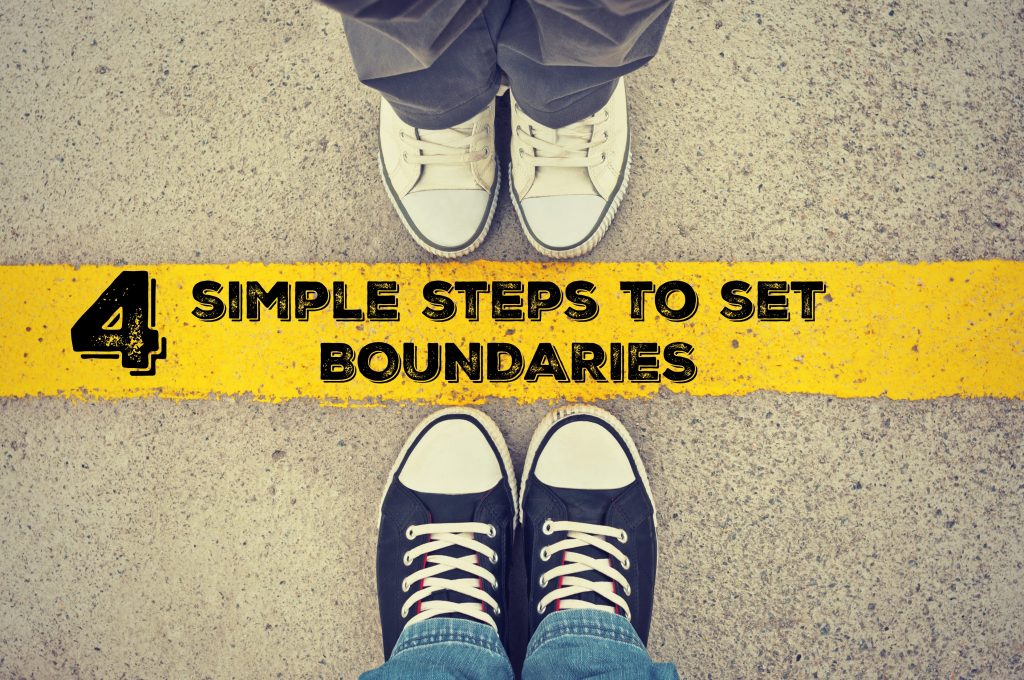Podcast: Play in new window | Download
Subscribe: RSS
If you want to get good at setting boundaries you’ve come to the right place. In my previous blog I highlighted 4 benefits you can expect by setting boundaries. Here I’m going to give you 4 simple steps to do it. Let’s check out the first one.#1: Listen to your gut
This is slightly different than “go with your gut”. It’s a bit slower and keeps you from acting impulsively. Your gut alerts you that something does sit right with you. Listen to what your gut is saying. Your gut activates your boundary system. Check it out. Answer the question: What am I feeling? It feels like…- an intrusion of my personal space
- an imposition of my time
- an expectation is being placed on me that only accepts “yes” for an answer
- I’m being told what to do
- I’m expected to just go along
- my voice is not being heard, considered
- guilt. If I say “no” I will disappoint others.
- fear. I don’t want people to be mad at me or stop liking me.
#2: Move to your center
Your center is that internal quite place where you can listen to yourself. The purpose here is to silence the chatter in your head. Moving to the center gives you time to slow down your thoughts and emotions. Furthermore, it allows you to process your gut reaction more thoroughly. You can decide for yourself:- Is the expectation from other doable? Yes/no
- Does the expectation interfere with my plans?
- Does it cross a personal, moral, sexual, etc… boundary?
- Does it feel intrusive, or insensitive to my needs?
#3: Use your active voice
A passive voice is weak and submissive. An active voice is strong and respectful. It combines the ability to respectfully validate others intentions while holding your position on a matter. Here are a few examples of how an active voice sounds.- “I can see you are in a jam here and I wish I could help but I have a prior commitment.”
- “I am attracted to you too, and perhaps we could be a good match, but I’m not ready for a romantic relationship at this time.”
- “I get that you’re angry and I want to work this out with you, but in order to do this it would help if you to lower your voice.”

